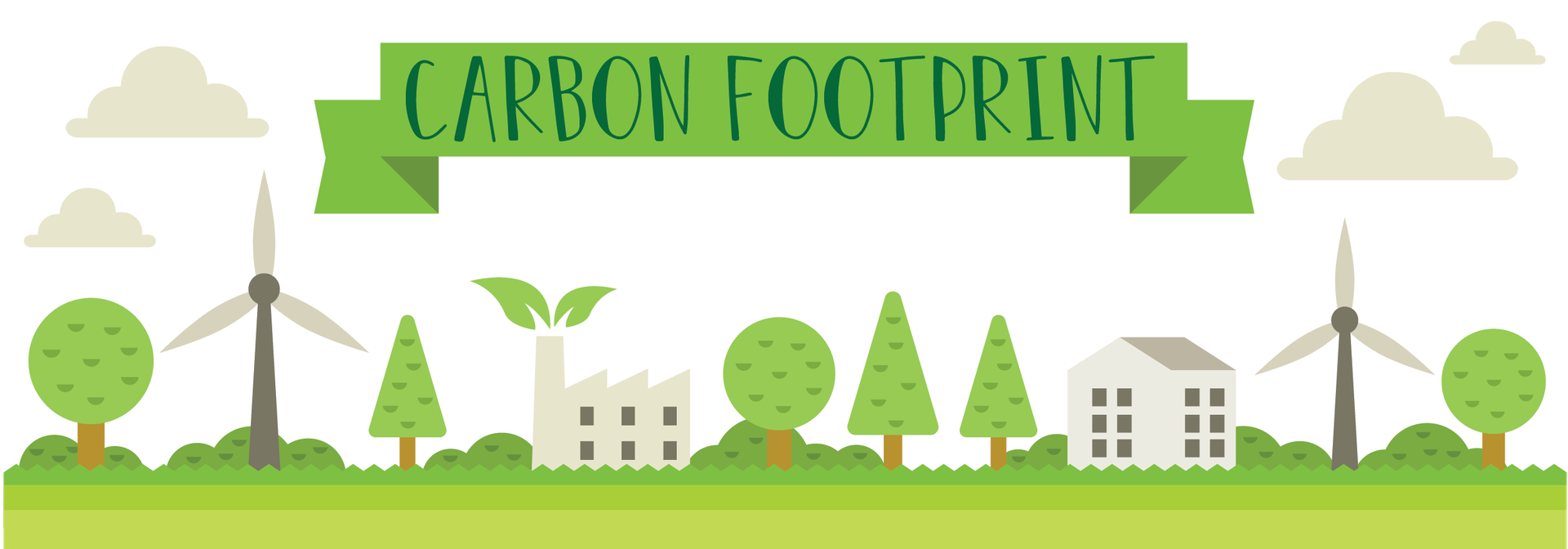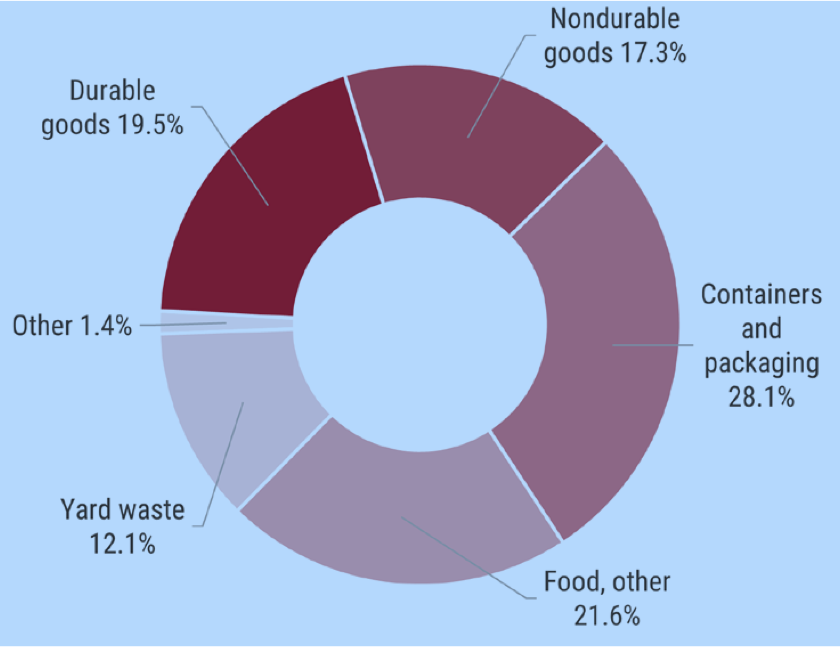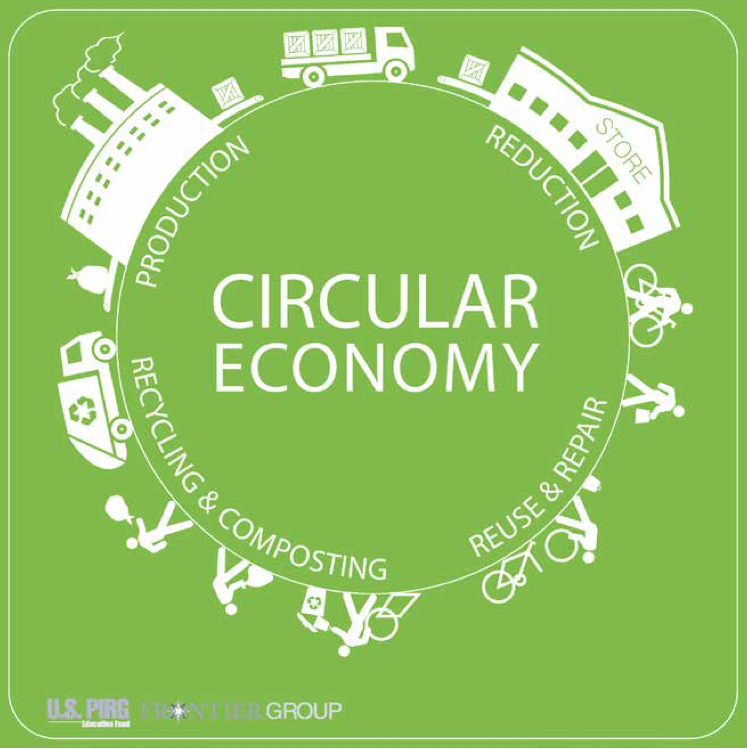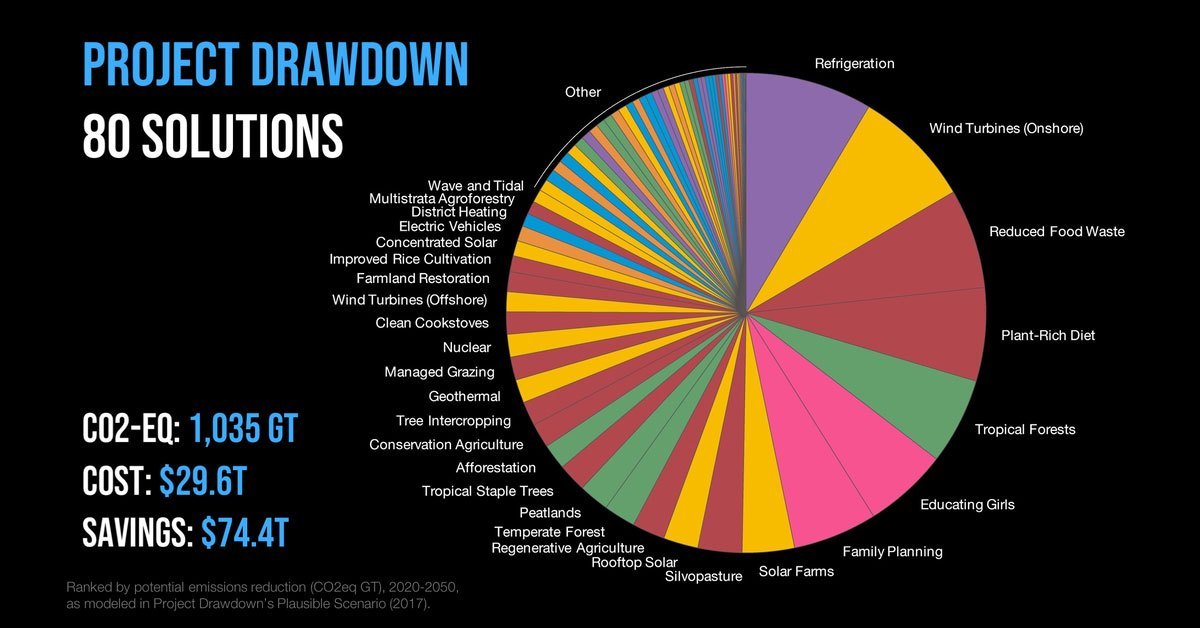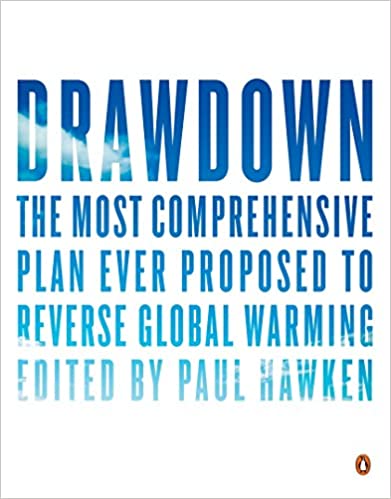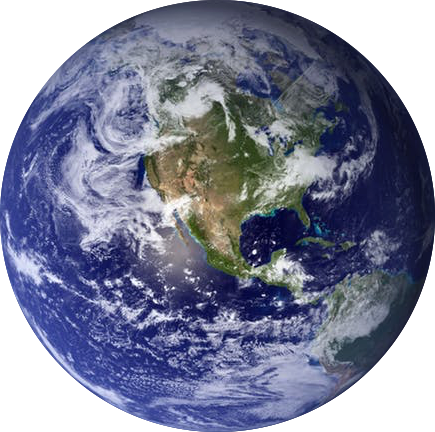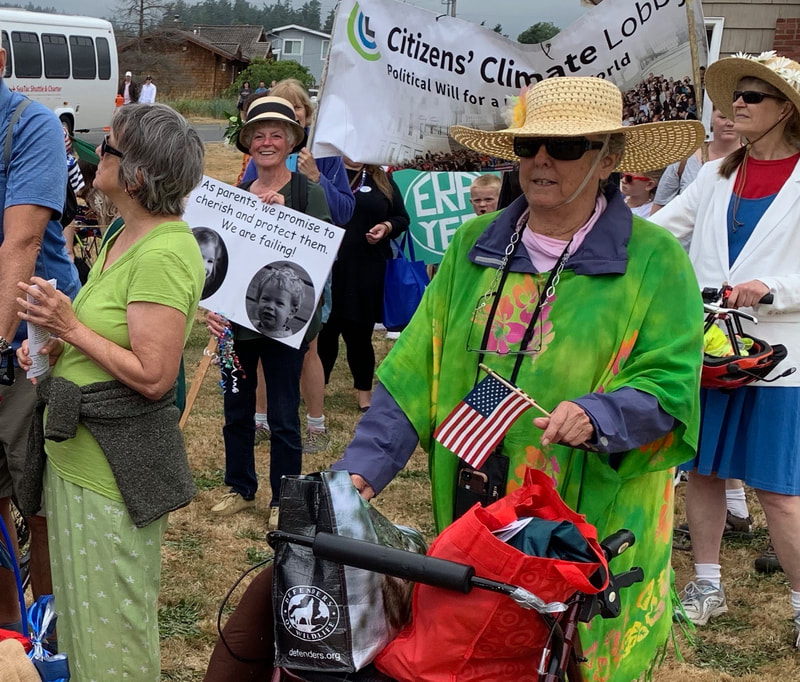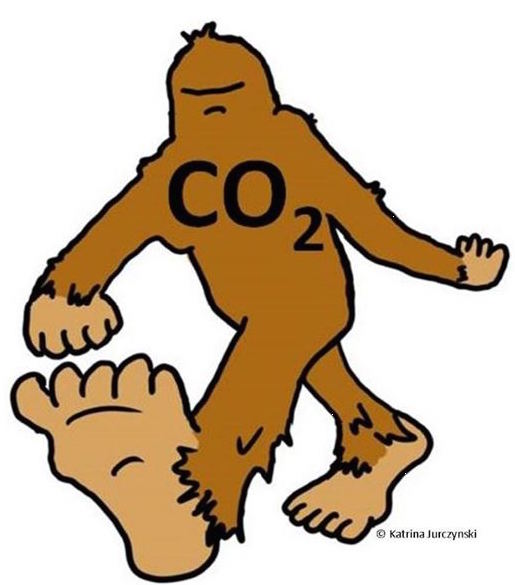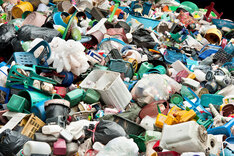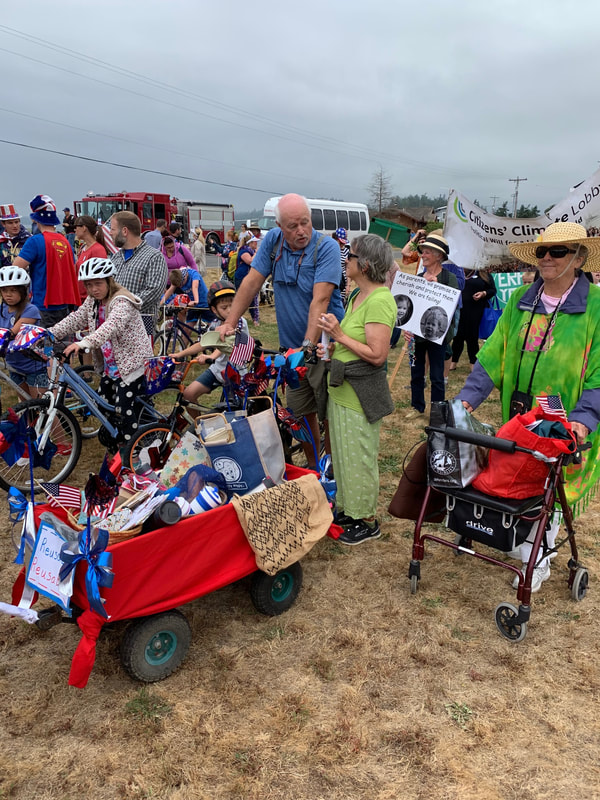Curious about your own carbon footprint ? Here is a link to a free carbon footprint calculator. Learning where your family could stand to focus some attention and implement change is a great first step! Mother Earth thanks you.
Waste Factoids
Brief summary of EnvironmentalAmerica's “Trash in America - Moving from destructive consumption towards a zero-waste system, 2021 Edition” Full article
By coming to grips with our nation’s unsustainable linear material economy, and by putting the right policies and signals in place, America can move toward a more sustainable future – one that recognizes that there is no such place as “away.”
Did you know?
Did you know?
- The U.S. produces more than 12% of the planet’s trash*, though it is home to only 4% of the world’s population.
- More than 91% of plastic was landfilled or incinerated in 2018.
- Food waste and yard trimmings make up more than a third (33.7%) of U.S. garbage.
- Thanks to a variety of policies and programs, such as making manufacturers responsible for disposing of packaging, Germany now recycles 67% of household waste.
|
Hope:
|
Efforts to reduce waste should prioritize: reducing material consumption first and foremost; reusing, refurbishing and repairing everything possible; and recycling or composting all remaining materials.
|
Just click the words in grey in the bullet list to the right, to learn more!
|
It's Easy Being Green - re-posted from Environment Washington
Below are a few ways that you can help raise the next generation of environmentalists, starting with your kids, grandkids, nieces and nephews, neighbors, or students. Focus: ways to reduce waste.
|
Beyond the Usual Ideas for Shrinking Your Carbon Footprint
Send us your new favorite if not mentioned below! EMAIL US
(List borrowed from "Who Gives A Crap" then edited by Shelly Ackerman, GCC.)
(List borrowed from "Who Gives A Crap" then edited by Shelly Ackerman, GCC.)
1. Buy Less
We buy and store more stuff than any other time in human history. If you have to rent a storage facility for items you don't have room in your house for, you are not alone. It could be psychological - we feel we have value through what we own. Find help to donate, gift, or sell items that are wasted by just sitting in your closets, garages and basements. Book suggestion: The Buy Nothing Get Everything Plan
2. Plant Bee friendly plants
Incorporate plants into your gardens that are bee friendly. Ask at your favorite nursery for suggestions. Without bees, we loose 1/3 of our food on this planet. They are key to pollination of many fruits and vegetables.
3. Properly dispose of your appliances
We know this seems random, but it’s one of the most impactful things you can do for the environment. ACs and refrigerators run on hydrofluorocarbons, a refrigerant that releases tonnes of carbon dioxide when not properly removed.
4. Reuse
Yes, recycling is helpful but so little actually gets recycled (yes even your items you sorted and took to the recycling center). Also, recycling consumes a lot of energy. You know what takes less energy? Washing out that jam or spaghetti sauce jar. Instead of buying reusable containers, consider what you already have laying around your recycling bin. Jars are pretty full of bulk nuts, seeds and grains.
5. Support women’s education
What does women’s education have to do with the environment? Turns out, a lot! According to Project Drawdown, “Letting more girls continue their education, receive wanted contraception, and space out their youngsters as they’d like could cut around 120 billion tons of greenhouse gases that we'd otherwise emit over the next 30 years.” Scroll down for more about the book.
6. Support forest protection organizations
Planting trees is awesome, but it takes decades to foster the biodiversity and complexity that pre-existing forests have. The older the forest, the more it’s able to trap and synthesises carbon dioxide. That’s why it’s so important to invest in protecting the forested lands that are currently in danger.
7. Start a compost
All you need to get started is a bin (or bag) to collect your food scraps. Some bins are so good looking, they could double as countertops decor. Nothing says eco-fabulous quite like a mid-century modern compost bin, right?
8. Turn off the lights
We don’t mean to sound like your dad, but turn off the lights when you leave a room, for pete’s sake! On average, we consume 12,000 watts of energy per year - that’s 6x more than what environmental scientists recommend. Just being intentional about your energy usage can go a long way to living more efficiently.
9. Get off the computer
Did you know that searching the internet has a carbon footprint? The internet as a whole accounts for as much carbon as does global aviation! As each year passes, people are developing more complex, visually elaborate websites. These websites may look and work well – but behind the scenes they use huge amounts of energy each time they are loaded. To put this in perspective: loading the average website uses up to the equivalent of boiling water for tea.
10. Do a plastic stocktake
We all know that plastic free and reusable items are better for the environment. Still, we challenge you to look around your house and see how many you’re actually using. You may be surprised by all of the single use plastic hiding in your bathroom, kitchen and bedside table. Those things may be convenient, but they’re a real hassle for the planet. For one month, separate out from your garbage, all plastic items of any kind. Then see how much of what you buy and toss is made of plastic.
11. Shop bamboo
Who Gives a Crap sells premium 100% bamboo toilet paper rolls, but bamboo can do a lot more than make incredibly soft toilet paper. It can make furniture, bicycles, boats, baskets, fabric and almost every part of your house. Bamboo is technically grass, so it repopulates quickly, and it's a super sustainable material. In fact, bamboo takes carbon out of the air faster than nearly any other plant.
12. Shop Thrift Stores
We have an abundance of second hand shops here on Whidbey. Before purchasing something, consider checking the thrift stores. It helps supports our community and food bank as well!
13. Try solar power
Rooftop solar panels are an incredible way to generate electricity without releasing any greenhouse gasses. Plus, they are much more cost effective than your standard electric grids. If you’re not ready for all of that, solar-powered light fixtures and appliances are a great first step. I LOVE my solar powered keyboard! (by Logitech)
14. Be water conscious
A nice, long shower is, well, nice. But an average 10 minute shower wastes around 75–190 litres of water, so try to keep your lather time to 4 minutes. And think about this - we do not need a daily shower. In fact it strips the skin of its natural oils. A daily shower was encouraged by soap manufacturers to sell more soap!!!
15. Share a Ride
Too far to walk? Too rusty on a bike? Take advantage of public transportation when ever you can or carpool to the store with a neighbor.
16. Vote
Climate change can seem like a problem of personal consumption, but it is important to recognize the structural changes that we need for a healthier planet. Put your money where your recycling bin is and support candidates that share your passion for environmental justice.
17. Be wary of wholesale supermarkets
Stores like Costco offer great deals, but if you’re not actually eating everything you buy, it’s a terrible deal for Mama Earth. We’ve all been guilty of letting lettuce wilt or mold over, but when you throw away uneaten food, you’re also tossing the energy, seeds and water it took to grow it. Also, they tend to use more packaging not less at these big box stores.
18. Eat a plant-rich diet
A study from the Environmental Workin Group shows that red meat is responsible for 10 to 40 times as many greenhouse gas emissions as vegetables and grains. And it’s not just cheeseburgers that are the problem. Just the act of growing the feed for livestock emits a shocking amount of nitrous oxide, a greenhouse gas 300 times more potent than carbon dioxide. Try to eat less at least.
19. Have a conversation
Too many people think that climate change is too big, too far away or too sciencey to understand. Check out a TED talk entitled: The most important thing you can do to flight climate change: talk about it.
20. Spend wisely
Your money is a super powerful tool! Try to support businesses that are kind to the environment, consider where your superannuation, banking and energy dollars are going, and demand investments into clean energy and away from fossil fuels.
21. Buy less clothing
Worldwide, 80% of used textiles end up in a landfill. Fast Fashion is a very real threat to the environment, so try to only buy the things that you truly need and love. Even better, buy second-hand to break the cycle of overconsumption. After all, a healthy planet never goes out of style.
22. Cook with local in-season veggies
Skip the produce that’s had to be flown halfway across the world. In-season produce (local too) tastes so much more delicious anyway. Check out seasonal shopping guides for summer or winter, and think of all of the wonderful fruit pies you could make.
23. Ditch your lawn
Your lawn may be a big source of carbon, if you keep it mowed with a gas mower, use chemicals to keep the weeds down, and keep it green by watering it during it's naturally dormant season. It is also a time zapper! Consider having a smaller lawn and otherwise planing native, drought tolerant plants. Keep grass cut high- needs less water and stays healthier, resisting weeds naturally. Use only organic lawn food with no weed killer added. Gas mowers are NOT built to clean air standards of any kind. The next time you go to buy a lawn mower, consider an electric one instead!
24. Buy eco-friendly paper products
Each day, 27,000 trees are cut down just to make toilet paper. By making the switch to eco-friendly TP you are helping fight deforestation and reducing CO2 emissions.Check out Who Gives a Crap
We buy and store more stuff than any other time in human history. If you have to rent a storage facility for items you don't have room in your house for, you are not alone. It could be psychological - we feel we have value through what we own. Find help to donate, gift, or sell items that are wasted by just sitting in your closets, garages and basements. Book suggestion: The Buy Nothing Get Everything Plan
2. Plant Bee friendly plants
Incorporate plants into your gardens that are bee friendly. Ask at your favorite nursery for suggestions. Without bees, we loose 1/3 of our food on this planet. They are key to pollination of many fruits and vegetables.
3. Properly dispose of your appliances
We know this seems random, but it’s one of the most impactful things you can do for the environment. ACs and refrigerators run on hydrofluorocarbons, a refrigerant that releases tonnes of carbon dioxide when not properly removed.
4. Reuse
Yes, recycling is helpful but so little actually gets recycled (yes even your items you sorted and took to the recycling center). Also, recycling consumes a lot of energy. You know what takes less energy? Washing out that jam or spaghetti sauce jar. Instead of buying reusable containers, consider what you already have laying around your recycling bin. Jars are pretty full of bulk nuts, seeds and grains.
5. Support women’s education
What does women’s education have to do with the environment? Turns out, a lot! According to Project Drawdown, “Letting more girls continue their education, receive wanted contraception, and space out their youngsters as they’d like could cut around 120 billion tons of greenhouse gases that we'd otherwise emit over the next 30 years.” Scroll down for more about the book.
6. Support forest protection organizations
Planting trees is awesome, but it takes decades to foster the biodiversity and complexity that pre-existing forests have. The older the forest, the more it’s able to trap and synthesises carbon dioxide. That’s why it’s so important to invest in protecting the forested lands that are currently in danger.
7. Start a compost
All you need to get started is a bin (or bag) to collect your food scraps. Some bins are so good looking, they could double as countertops decor. Nothing says eco-fabulous quite like a mid-century modern compost bin, right?
8. Turn off the lights
We don’t mean to sound like your dad, but turn off the lights when you leave a room, for pete’s sake! On average, we consume 12,000 watts of energy per year - that’s 6x more than what environmental scientists recommend. Just being intentional about your energy usage can go a long way to living more efficiently.
9. Get off the computer
Did you know that searching the internet has a carbon footprint? The internet as a whole accounts for as much carbon as does global aviation! As each year passes, people are developing more complex, visually elaborate websites. These websites may look and work well – but behind the scenes they use huge amounts of energy each time they are loaded. To put this in perspective: loading the average website uses up to the equivalent of boiling water for tea.
10. Do a plastic stocktake
We all know that plastic free and reusable items are better for the environment. Still, we challenge you to look around your house and see how many you’re actually using. You may be surprised by all of the single use plastic hiding in your bathroom, kitchen and bedside table. Those things may be convenient, but they’re a real hassle for the planet. For one month, separate out from your garbage, all plastic items of any kind. Then see how much of what you buy and toss is made of plastic.
11. Shop bamboo
Who Gives a Crap sells premium 100% bamboo toilet paper rolls, but bamboo can do a lot more than make incredibly soft toilet paper. It can make furniture, bicycles, boats, baskets, fabric and almost every part of your house. Bamboo is technically grass, so it repopulates quickly, and it's a super sustainable material. In fact, bamboo takes carbon out of the air faster than nearly any other plant.
12. Shop Thrift Stores
We have an abundance of second hand shops here on Whidbey. Before purchasing something, consider checking the thrift stores. It helps supports our community and food bank as well!
13. Try solar power
Rooftop solar panels are an incredible way to generate electricity without releasing any greenhouse gasses. Plus, they are much more cost effective than your standard electric grids. If you’re not ready for all of that, solar-powered light fixtures and appliances are a great first step. I LOVE my solar powered keyboard! (by Logitech)
14. Be water conscious
A nice, long shower is, well, nice. But an average 10 minute shower wastes around 75–190 litres of water, so try to keep your lather time to 4 minutes. And think about this - we do not need a daily shower. In fact it strips the skin of its natural oils. A daily shower was encouraged by soap manufacturers to sell more soap!!!
15. Share a Ride
Too far to walk? Too rusty on a bike? Take advantage of public transportation when ever you can or carpool to the store with a neighbor.
16. Vote
Climate change can seem like a problem of personal consumption, but it is important to recognize the structural changes that we need for a healthier planet. Put your money where your recycling bin is and support candidates that share your passion for environmental justice.
17. Be wary of wholesale supermarkets
Stores like Costco offer great deals, but if you’re not actually eating everything you buy, it’s a terrible deal for Mama Earth. We’ve all been guilty of letting lettuce wilt or mold over, but when you throw away uneaten food, you’re also tossing the energy, seeds and water it took to grow it. Also, they tend to use more packaging not less at these big box stores.
18. Eat a plant-rich diet
A study from the Environmental Workin Group shows that red meat is responsible for 10 to 40 times as many greenhouse gas emissions as vegetables and grains. And it’s not just cheeseburgers that are the problem. Just the act of growing the feed for livestock emits a shocking amount of nitrous oxide, a greenhouse gas 300 times more potent than carbon dioxide. Try to eat less at least.
19. Have a conversation
Too many people think that climate change is too big, too far away or too sciencey to understand. Check out a TED talk entitled: The most important thing you can do to flight climate change: talk about it.
20. Spend wisely
Your money is a super powerful tool! Try to support businesses that are kind to the environment, consider where your superannuation, banking and energy dollars are going, and demand investments into clean energy and away from fossil fuels.
21. Buy less clothing
Worldwide, 80% of used textiles end up in a landfill. Fast Fashion is a very real threat to the environment, so try to only buy the things that you truly need and love. Even better, buy second-hand to break the cycle of overconsumption. After all, a healthy planet never goes out of style.
22. Cook with local in-season veggies
Skip the produce that’s had to be flown halfway across the world. In-season produce (local too) tastes so much more delicious anyway. Check out seasonal shopping guides for summer or winter, and think of all of the wonderful fruit pies you could make.
23. Ditch your lawn
Your lawn may be a big source of carbon, if you keep it mowed with a gas mower, use chemicals to keep the weeds down, and keep it green by watering it during it's naturally dormant season. It is also a time zapper! Consider having a smaller lawn and otherwise planing native, drought tolerant plants. Keep grass cut high- needs less water and stays healthier, resisting weeds naturally. Use only organic lawn food with no weed killer added. Gas mowers are NOT built to clean air standards of any kind. The next time you go to buy a lawn mower, consider an electric one instead!
24. Buy eco-friendly paper products
Each day, 27,000 trees are cut down just to make toilet paper. By making the switch to eco-friendly TP you are helping fight deforestation and reducing CO2 emissions.Check out Who Gives a Crap
Quiz yourself!
Take this interactive quiz from CNN to test your knowledge on the most effective ways to lower CO2 on our planet: https://www.cnn.com/interactive/2019/04/specials/climate-change-solutions-quiz/index.html
Want to learn more about our carbon footprint across the globe? Click the book cover graphic above to visit the website for the book. Or call Moonraker Books in Langley to order a copy.
|
From our Taming Big Foot Challenge in 2018
See below for shared resources from our Taming Bigfoot
|
A new study by Yale researchers finds that our conversations with friends and family about climate disruption may be one of the most compelling factors motivating them to learn more about the climate crisis. CLICK HERE FOR ARTICLE
The GCC took this on to engage our community and accelerate Whidbey's progress toward reducing carbon pollution and saving the future for our children and grandchildren. Below are a few helpful resources shared through-out the three month challenge. Also check out our blog page from time to time.
Carbon Calculator for Participants
The calculator is still available for registered participants to use even after the official challenge completion date. NOTE: Go to reports rather than competition to review your data. In reports you can set any date range you desire to get a data summary or you can check the box “compare” and enter two date ranges for comparison. The data under the competition tab is locked to the dates of the competition.
Some links of interest:
Per Espen Stoknes “Transforming Apocalypse Fatigue into Action on Global Warming" CLICK HERE
Amanda Ripley “Complicating the Narratives” (her presentation begins at minute 4, intro is by Citizens Climate Lobby) CLICK HERE
Our member Rick Mylander's Blog about the documentary "Behold the Earth" which the GCC will be showing in our community soon: CLICK HERE
Guardian Article about what some climate scientists are doing themselves for the planet: CLICK HERE
Per Espen Stoknes “Transforming Apocalypse Fatigue into Action on Global Warming" CLICK HERE
Amanda Ripley “Complicating the Narratives” (her presentation begins at minute 4, intro is by Citizens Climate Lobby) CLICK HERE
Our member Rick Mylander's Blog about the documentary "Behold the Earth" which the GCC will be showing in our community soon: CLICK HERE
Guardian Article about what some climate scientists are doing themselves for the planet: CLICK HERE

Plastic and waste plays a big part in the health of our planet. Our Taming Bigfoot challenge only captured a small percentage of that piece. Learn more about how to reduce, reuse, and think differently by checking out the Zero Waste Washington Website, even if zero waste is not your goal.
SCROLL DOWN FOR FULL SLIDE SHOW
- If I do fly, should I buy offsets? Do you accept the following?:
*The polluter should pay for his/her pollution
*The more something costs, the less of it we will tend to use
(Note: ~all economists support a price on carbon)
My own view: Until/unless there is a set price (international,national,state) on carbon (e.g. tax, fee/dividend, cap-n-trade), I will choose to take individual action by imposing a carbon tax on myself to offset (at least partially) my travel emissions
Special case for no flying: all close relatives and friends nearby, no work travel (retired), no wish to see China, New Zealand... (Some local viewpoints)
“There are lots of offsetters, and the prices vary. Most offer calculators for ordinary activities and/or your whole lifestyle. They also vary in the assumptions made and results. Look for offsetters that have certification from reputable raters. Most will give you details about the projects they invest in”.
Some good ones are:
Full Slide show is below - please scroll down...
- If I do fly, should I buy offsets? Do you accept the following?:
*The polluter should pay for his/her pollution
*The more something costs, the less of it we will tend to use
(Note: ~all economists support a price on carbon)
My own view: Until/unless there is a set price (international,national,state) on carbon (e.g. tax, fee/dividend, cap-n-trade), I will choose to take individual action by imposing a carbon tax on myself to offset (at least partially) my travel emissions
Special case for no flying: all close relatives and friends nearby, no work travel (retired), no wish to see China, New Zealand... (Some local viewpoints)
“There are lots of offsetters, and the prices vary. Most offer calculators for ordinary activities and/or your whole lifestyle. They also vary in the assumptions made and results. Look for offsetters that have certification from reputable raters. Most will give you details about the projects they invest in”.
Some good ones are:
Full Slide show is below - please scroll down...
Article Links:
“Air travel is surging, a huge problem for climate” (US airlines have an abysmal carbon footprint) By Umair Irfan Updated Jan 13, 2019
Green old deal: Why carbon offsets matter more than ever (THE HILL) By Tim Whitley, opinion contributor — 03/29/19
“Air travel is surging, a huge problem for climate” (US airlines have an abysmal carbon footprint) By Umair Irfan Updated Jan 13, 2019
Green old deal: Why carbon offsets matter more than ever (THE HILL) By Tim Whitley, opinion contributor — 03/29/19
Richard Gammon's Slide Show on Air Travel
press play button below or click arrows to go through each slide...
